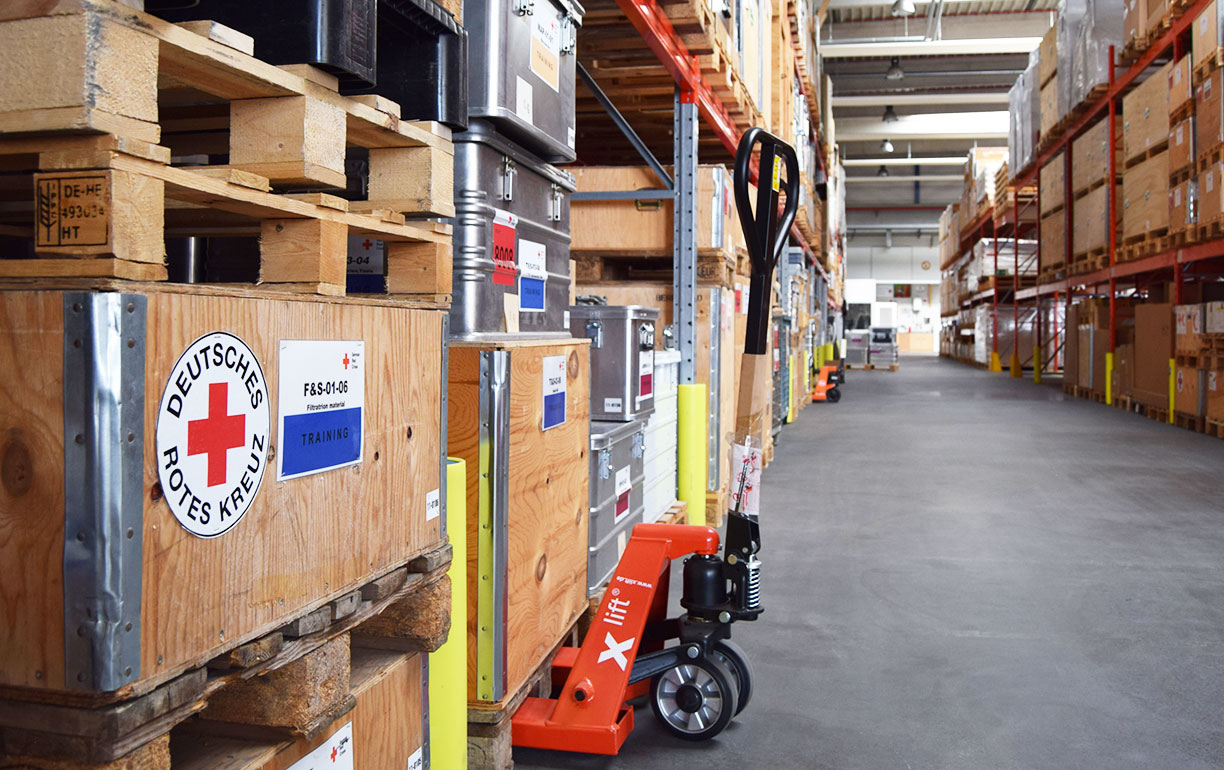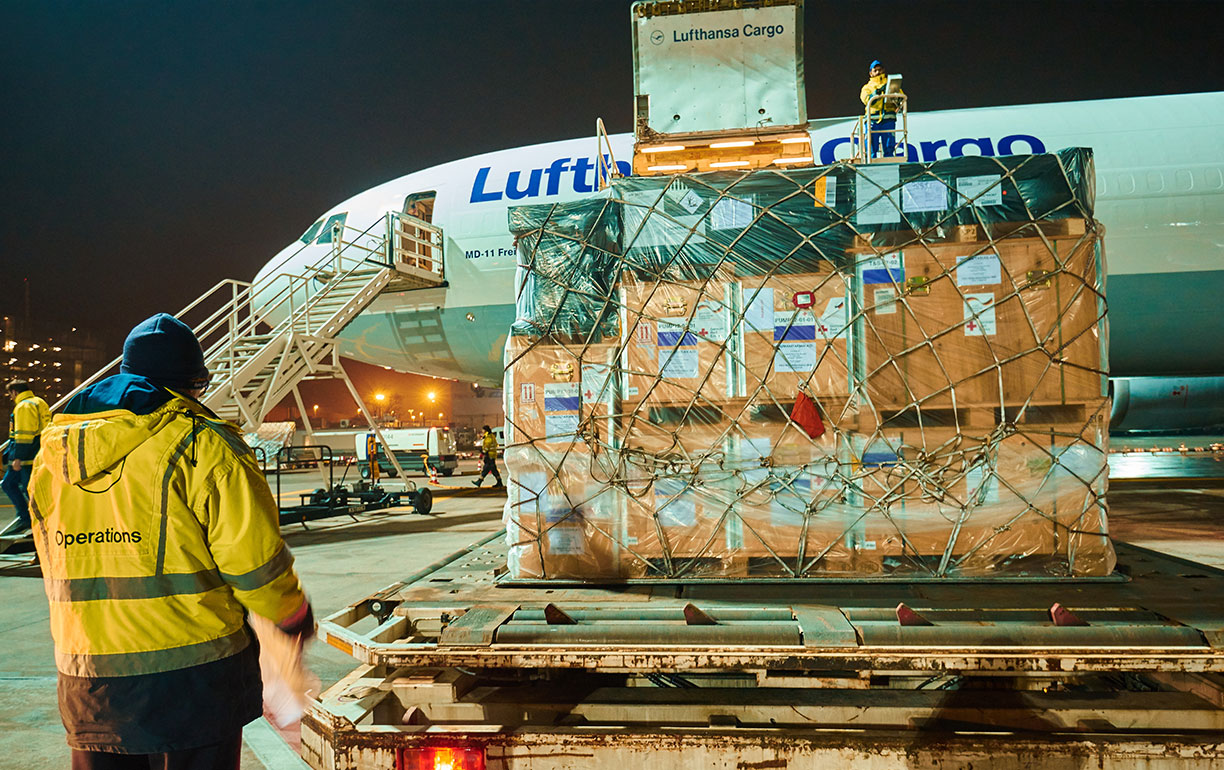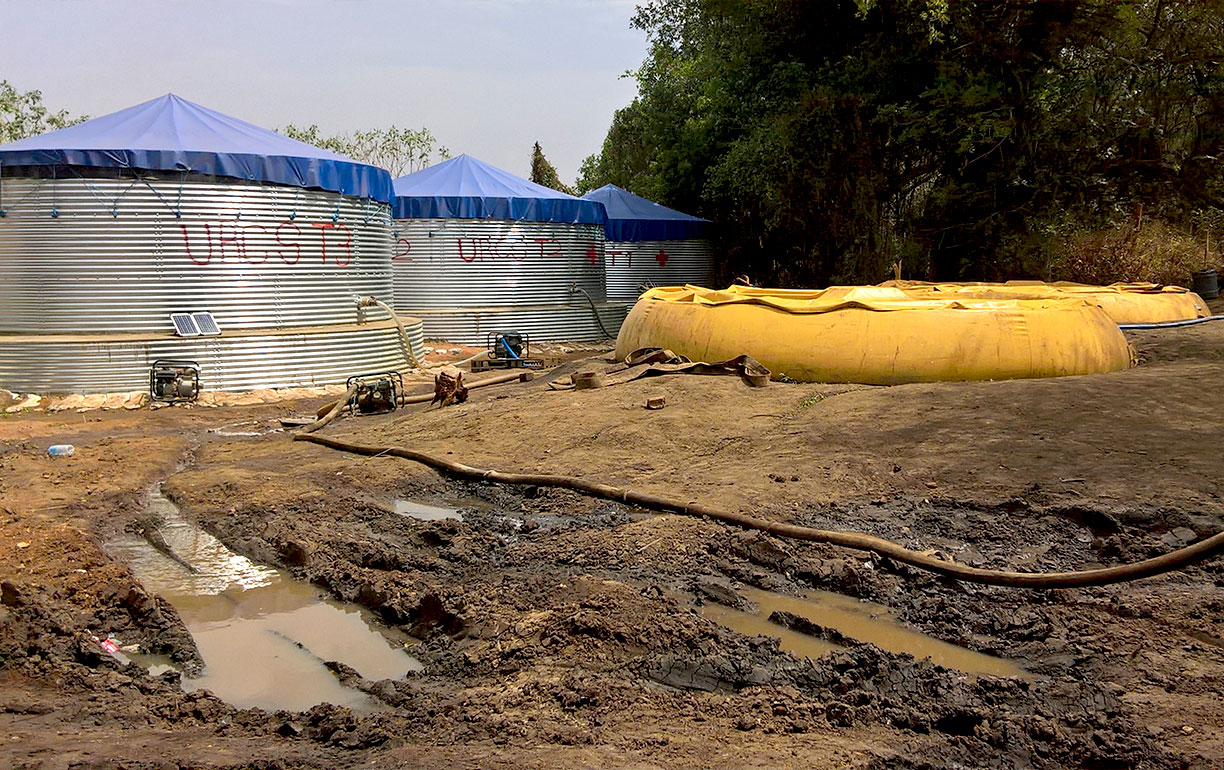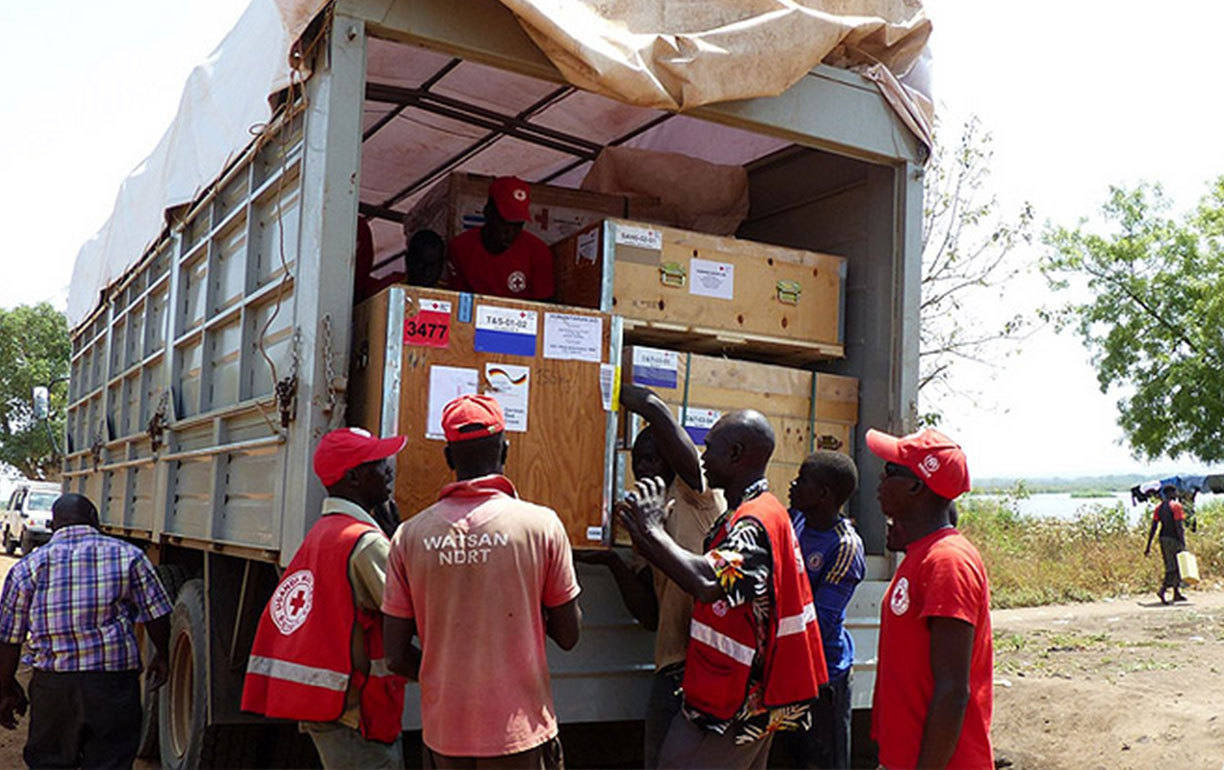
When logistics saves lives.
Two factors are crucial for aid flights into crisis zones: speed and effective cooperation. For this reason, the German Red Cross (Deutsches Rotes Kreuz – DRK) and Lufthansa Cargo signed a cooperation agreement in December. But how does the aid reach its destination from Berlin? Clemens Pott, Head of Logistics at the DRK, explains.
Clemens Pott, Head of Logistics at the German Red Cross (Deutsches Rotes Kreuz – DRK), is responsible for preparing and implementing DRK aid flights from a logistical perspective. He has been working for the DRK for over 20 years. Until 2002, he was the DRK international delegate for disaster aid.
Clemens Pott, are you permanently in disaster mode?
Not at all. In the case of longer-term disasters, such as the famine in Africa or the conflict in Syria, we can plan the supply of humanitarian aid further in advance than, say, after a major earthquake.
But in the event of a disaster you need to act quickly. How long is it before an aid flight can take off?
From making the decision to send aid, we need to allow three to four days to put together a team and the supplies. Of course, we also assess in advance what the situation is like in the crisis zone – for example whether the airport there is still operating, what facilities there are for unloading the aid and how it will reach the disaster area. Then we charter cargo capacity, prepare the customs and transport documents and find a freight forwarder to handle everything locally. The life-saving emergency measures are taken by locals. They are mainly volunteers with our Red Cross and Red Crescent societies in the countries in question. Several days after an earthquake, the humanitarian aid activities begin to focus on preventing infectious diseases and epidemics. At that point, our job is to replace the damaged infrastructure by making medical facilities available and providing supplies of drinking water.
Nevertheless, it’s during the first few days that the clock is really ticking. How do you get hold of an aircraft in such a short period of time?
We work with several brokers who can find suitable transport within half a day. This could be a full charter or a partial load.
Does the framework agreement with Lufthansa Cargo involve a special process?
We are subject to the provisions of procurement law. This means that we have to get several quotations and award the contract to the most cost-effective supplier. But when we get as far as working together, the partnership offers major advantages. The framework agreement and the fact that our processes are coordinated ensure that Lufthansa Cargo can respond quickly and transport aid cheaply and efficiently to its destination. In particular, in the first few days after a disaster, it is important that no unnecessary problems occur. Everything goes more smoothly when the organizations know one another and function as equal partners.
How do you know what will be needed in the disaster zone?
With 190 national societies, the Red Cross has an organization in almost every country that can quickly give us a reliable assessment of the actual situation. In the case of large-scale disasters, our umbrella organization, the IFRC in Geneva, coordinates our activities and sends an international investigation team to the disaster area that can quickly identify what is needed.
Why do you not simply keep everything in stock?
We have rules within the Red Cross and Red Crescent organization about keeping aid supplies and emergency equipment in stock. Not every country has everything. We are one of the largest national societies and our logistics center in Berlin is one of the biggest within the organization. Our building at Schönefeld airport has a floor area of 4500 square meters and stores several water treatment systems, two health clinics and a complete hospital. It also has a basic camp that is capable of housing up to 150 staff, and aid supplies such as tents and cooking and sanitary equipment for 2500 people. The total value of all this is approximately €4.5 million, so you can see that keeping aid supplies in stock is very costly. This is why we only keep items that are not readily available on the open market. This also applies to products that have a short shelf life, such as medicines.
It’s clear that an aid flight is a very complex undertaking. Where do the difficulties lie?
Of course, it’s important to take local requirements into account – and these include religious dietary rules. For example, beef is taboo in Nepal. We also have to be careful to ensure that we supply the same quality and quantity of aid to all the parties – particularly in civil wars such as that in Syria – so that we are seen to be a neutral organization. We cannot afford to make mistakes in this respect.
Thank you for talking to us!
Interview Anne Schafmeister
|
Clemens Pott, are you permanently in disaster mode? Not at all. In the case of longer-term disasters, such as the famine in Africa or the conflict in Syria, we can plan the supply of humanitarian aid further in advance than, say, after a major earthquake. But in the event of a disaster you need to act quickly. How long is it before an aid flight can take off? Nevertheless, it’s during the first few days that the clock is really ticking. How do you get hold of an aircraft in such a short period of time? Does the framework agreement with Lufthansa Cargo involve a special process? |
after a disaster, it is important that no unnecessary problems occur. Everything goes more smoothly when the organizations know one another and function as equal partners. How do you know what will be needed in the disaster zone? Why do you not simply keep everything in stock? It’s clear that an aid flight is a very complex undertaking. Where do the difficulties lie? Thank you for talking to us! Interview Anne Schafmeister |

In December 2016, Lufthansa Cargo and the DRK signed a framework agreement that will allow the two organizations to provide aid more quickly.

Lufthansa Cargo has been cooperating with Germany’s Relief Coalition Aktion Deutschland Hilft since February 2013 and recently entered into an agreement with the online air freight aid platform Airlink to provide support.

Aid for Uganda
Since 2013, around 800,000 people have fled the civil war in South Sudan and made their way to Uganda. Every day around 3000 people seek refuge there, and more than 80 percent of them are women and children. In February, Lufthansa Cargo and the DRK transported components for a water treatment plant to Uganda because there is also an ongoing drought in the region and millions of people have no access to clean water. The DRK is building wells and training volunteers to maintain standpipes.

The international Red Cross and Red Crescent movement, with 190 national societies and more than 100 million members and volunteers, is the world’s largest humanitarian organization. As part of this movement, the Deutsches Rotes Kreuz has been providing aid for people in conflict situations, disasters and emergencies for more than 150 years, solely on the basis of the extent of their need. The Red Cross has a network of eleven global logistics centers in the northern hemisphere. It also has three regional warehouses in Panama, Kuala Lumpur and Dubai. Its major campaigns are financed by public contributions and, most importantly, by donations.
Donations
Donations
Please visit drk.de/hilfe-fuer-uganda to make a donation or transfer it to the following bank account quoting the reference “Hungersnot”:
Deutsches Rotes Kreuz, Bank fuer Sozialwirtschaft
IBAN: DE 9837 0205 0000 0502 3453 BIC: BFSWDE33XXX
Photos:
Lufthansa Cargo (4), DRK (2)
